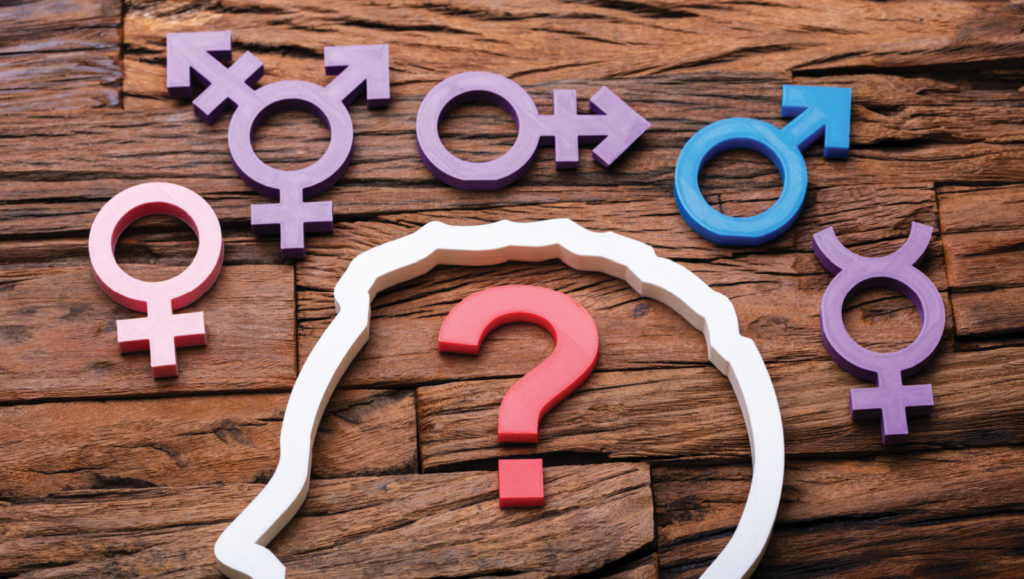Inclusivity Matters
Haley Peters, FNP-BC

It takes courage to come to a provider’s office. In healthcare, providers can often lose sight of how courageous our patients are in their quest to seek care. If a patient has had negative history in OBGYN offices, this will most likely impact their journey of seeking care. If providers have historically been accusatory or dismissive, the patient holds these experiences close to their heart. As a Family Nurse Practitioner, it is my goal to increase access to healthcare. One of the barriers is the importance of an inclusive setting, where all patients and individuals feel safe and supported. Many terms that are used in this article might be new for you. Please keep reading. There might be some discomfort as your vo-cabulary broadens – that’s part of evolving.
This article aims at clarifying and demystifying inclusive language and offering a healthcare option aimed at safety and understanding. Like everyone, I am continually learning and unlearning – and shifting my language to match. I am offering my perspective as a heterosexual, cisgendered woman with the privilege this entails. I hold all compassion for and support those who have and currently navigate steeper terrain with discrimination based on sex, gender, sexuality, race, ability, class, and age.
The world has been built to service and cater to heterosexual, cis-gender bodies. (If you don’t know these words yet… I promise I will explain them. Keep reading). Let’s start this by acknowledging that incorporating inclusive language can be intimidating. Expanding your language to be more inclusive takes time and practice. But that is not an excuse for using non-inclusive, discriminatory, or derogatory language. As a provider who strives to provide identity-affirming and trauma-informed care, I hope the following insight can increase your comfort with adopting a more accepting and broader vocabulary.
Genetics are tricky- and intimidating. Everyone typically has 23 pairs of chromosomes, making a total of the chromosomes that determine sex are X and Y. When discussing sex chromosomes, the term biological sex is used. Very often, sex chromosomes match genitalia present at birth. For example, a person with XX chromosomes typically has a vulva and XY chromosomes are often seen in people who have a penis and testicles. However, one in five hundred individuals have variations in the X and Y chromosomes. Yet most of these cases go undiagnosed because there are no symptoms or troubling issues that necessitated any testing.
At birth, children are assigned a sex based on genital appearance. Assigned sex is mistaken for gender. When assigned sex is referred to medically, the options include male, female, or intersex (both male and female anatomy and/or genetics are present). The limited and concrete nature of assigned sex can feel stifling. For many people, their assigned sex at birth does not align with their gender.
All people deserve compassionate, culturally humble, honest , and affirmative care from their healthcare providers.
Gender and sex are often used synonymously, and this, unfortunately, perpetuates the underlying message that the “correct” gender identity is the same as the assigned sex at birth. Like an intensely well-baked croissant, gender has more layers than one can count. Gender is a social construct used to classify or categorize individuals based on traits, roles, preferences, actions, and often, expression. Being cisgender (pronounced ‘sis’) means your assigned sex matches your gender identity. Trans-gender means your assigned sex does not match your gender identity. Gender identity is an individual’s understanding of their own gender. Different gender identities include but are not limited to woman, man, non-binary (meaning neither feminine nor masculine, nor gender identity on a spectrum outside a binary system), agender (someone who does not identify with a particular gender). Gender expression refers to how one expresses their gender to the outside world, either in appearance, dress, or behavior.
Gender is a nuanced and complicated topic. There is a lot of vulnerability and personal history packaged into gender identity. Identifying as transgender does not always mean that an individual is experiencing “gender dysphoria.” This is a medical term that is used when an individual feels intense stress and anxiety related to societal assumptions, expectations, messages and often, physical experience in regard to their gender assumed based on assigned sex. Language is fluid and constantly evolving. For those who do not feel that their gender matches the assigned sex, I feel that the term gender incongruence is more appropriate, as the covert messages of “correct” gender identity are removed. Historically, gender diversity has been criminalized and considered abnormal, or a “disorder” in society and medicine.
Gender identify is intensely personal and requires self-awareness to acknowledge one’s authentic self. If someone shares their gender identity with you, you should consider it a privilege. No one owes you an explanation of their gender identity OR what anatomy their body hosts.
All people deserve compassionate, culturally humble, honest, and affirmative care from their healthcare providers. This is a basic human right. If you or someone you know is treated with less, you or they should find a new provider (I acknowledge that for many, flexible options in care are not always possible.) Women’s Health offices have been historically saturated with the expectations and impending anxiety associated with vaginal exams and cervical swabs. As an office, we are committed to providing a safe and inclusive environment for all patients seeking care. If you were assigned female at birth and are transgender, we have a place for you. If you were assigned male at birth and are transgender, we have a place for you. If you are curious about anatomy-based screenings and have not found an office you have felt safe and seen in before?
We are here for you. With kindness, support, and always, love.
Questions to consider while facilitating an inclusive gender discussion:
How does/doesn’t gender impact your experience in the world?
What are social expectations existing around genders?
What barriers exist around incorporating inclusivity?
How can your actions impact and change the rigidity of language?
How can you facilitate a safe and inclusive environment/office/community?
For more information and resources on gender, identity, and allyship, please utilize the following sites as a starting point for your own information and growth:
Human Rights Campaign www.hrc.org
The Trevor Project www.thetrevorproject.org PFLAG www.pflag.org
It Gets Better Project www.itgetsbetter.org
This article appears in 406 Woman magazine.
